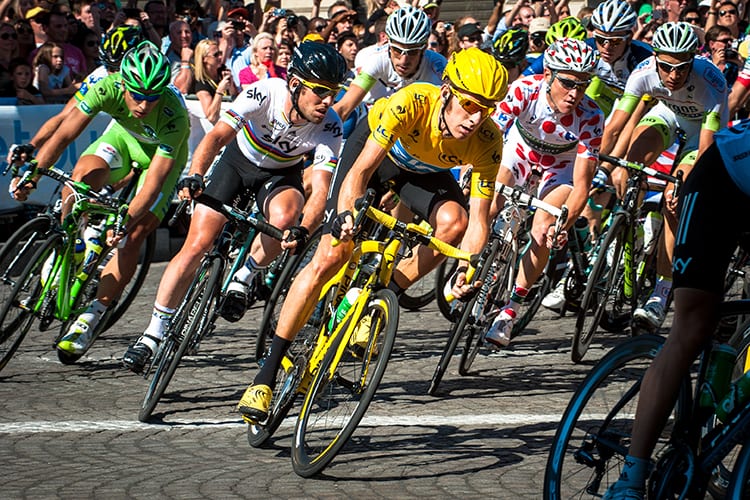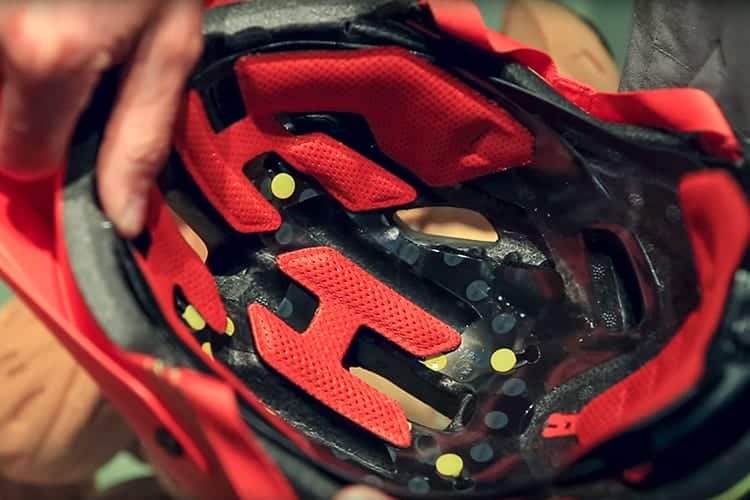by Seth Lindberg | Attorney, Reston, Leesburg

The grueling, weeks-long Tour de France – probably the world’s best-known bike race – began last Saturday. This year’s Tour is a combination of 21 flat, hilly, and mountainous stages with time-trials interspersed. While most Americans will never compete in any endurance cycling race like this, accidents and falls are prevalent in all levels of cycling. As just one dramatic example, during last year’s Tour de France Australian cyclist Richie Porte collided with a rock face on the side of the road at 70 kph, breaking both his collarbone and pelvis.
Cyclist fatalities in the United States are rising.
In 2016, 840 cyclists were killed in traffic accidents, the most since 1991. And last year more than one-third of Americans rode a bicycle, highlighting the fact that bike safety is an important public safety issue. Recently there has been a lot of media focus on the prevalence of concussions and traumatic brain injury in football, but Virginia Tech researchers note that in reality there are even more head injuries from cycling than from football.
Wearing a bike helmet is the best way to prevent a head injury, but until now there has been no way for consumers to know which helmets are the most effective at preventing head injuries: consumers could only review government ratings, which are simply pass-fail. Current standards for bike helmets – set by the U.S. government in 1999 – only assess whether the helmet “will prevent skull fractures and death in a direct impact, but they aren’t a good reflection of most real-world bike spills,” according to Professor Steve Rowson, director of the Virginia Tech Helmet Lab. Fortunately, Virginia Tech has stepped in to help consumers to know which helmets are safest, providing ratings on helmets in a variety of popular sports, including cycling.
What is MIPS and why does it matter?

In order to evaluate the effectiveness of each bicycle helmet, Virginia Tech completed real-world helmet testing. This real-world testing is designed to simulate how the head and helmet would react to dozens of different crash scenarios. Both direct hits and lateral strikes were tested, as well as hits to asphalt. Testing revealed that helmets equipped with what is called Multi-Directional Impact Protection System, or MIPS, performed the best. Helmets with MIPS did well at reducing concussion risks. MIPS helmets have an internal layer that allows the head to twist during an impact, which reduces the trauma forces and provides superior protection to the cyclist.
While helmets equipped with MIPS performed the best, Virginia Tech’s test revealed that urban-style helmets performed the worst. Urban-style helmets are usually equipped with few vents, have solid covers, and mimic the look of ski helmets.
Perhaps surprisingly, the testing also revealed that price had little to do with how well a helmet protects against concussions. For instance, the $200 Bontrager Ballista MIPS helmet earned five stars but was near the top of the price bracket, while the $75 Specialized Chamonix MIPS helmet also earned five stars, and is much more affordable. It is important to note that each helmet that Virginia Tech rated with five stars was equipped with MIPS.
Your brain will thank you.
So remember, whether you are a pro competing in the Tour de France or a weekend cyclist out for a leisurely bike ride, a good helmet is your most important line of defense against a possible Traumatic Brain Injury. And now, thanks to the research being conducted at Virginia Tech, it is even easier to arm yourself with information about which bike helmet will best keep you safe while you are out on the road.